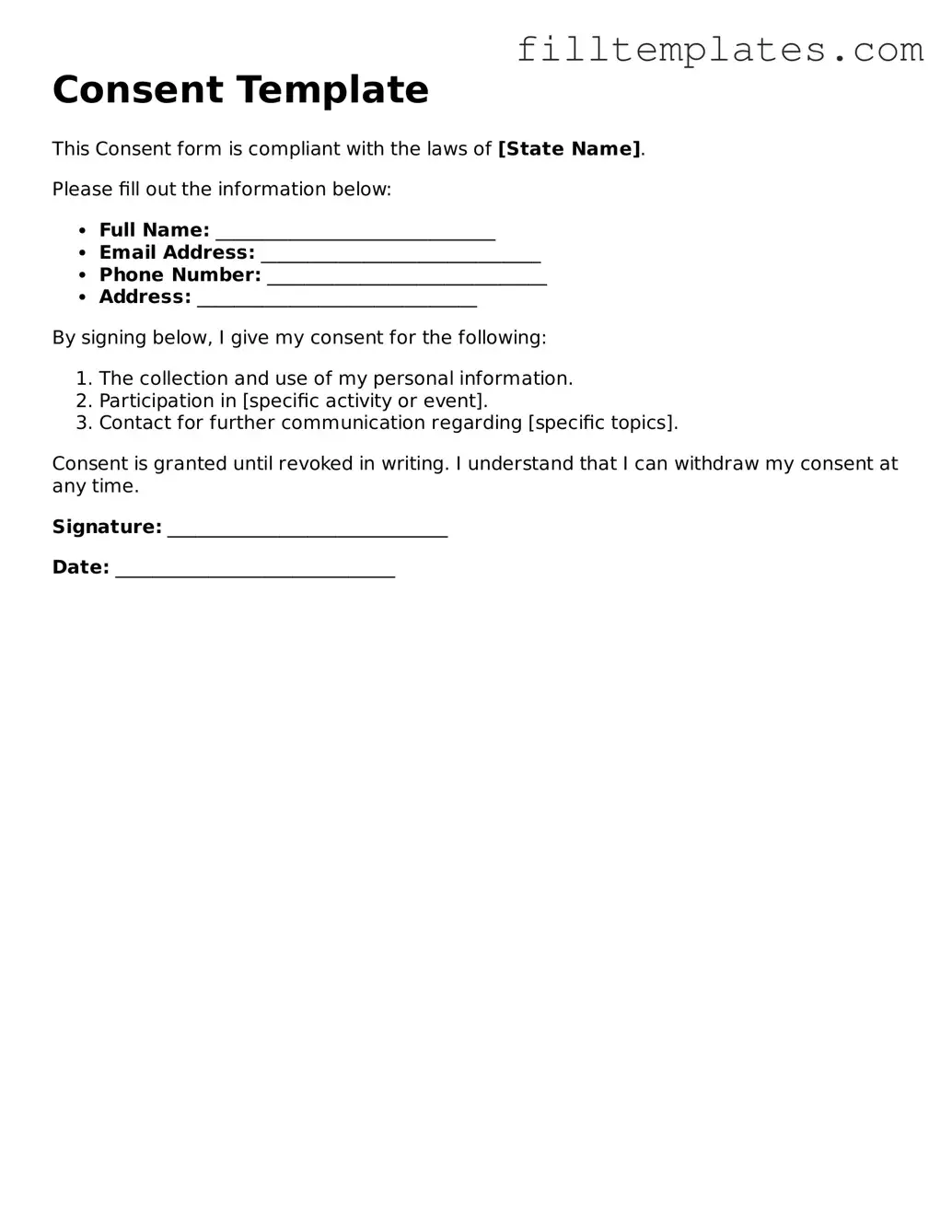The Consent form plays a crucial role in various settings, including medical, legal, and research environments. It serves as a written agreement that outlines the rights and responsibilities of all parties involved. This form typically includes essential elements such as the purpose of the consent, details about the procedures or treatments being authorized, and any potential risks or benefits associated with them. Additionally, it often highlights the individual's right to withdraw consent at any time, ensuring that personal autonomy is respected. Clear language is vital, as it helps individuals understand what they are agreeing to, thereby promoting informed decision-making. Furthermore, the Consent form must be signed by the individual granting permission, which adds an important layer of accountability. By understanding the intricacies of the Consent form, individuals can better navigate their rights and responsibilities in various situations.
